4. Sunride

CONCEPT

‘ Sunrise ’ + ‘ Neckride ’
What is your most precious memory that
you would take with you to the next universe?
This question reminded us of a sentimental childhood memory
with dad. By designing a wearable device for two people,
we wanted to make users feel the moment of watching sunrise
while riding on dad’s shoulders. It’s a moment of dad’s sacrifice
to show the beautiful world to me, and
sharing of the same moment by praying together.
INTERACTION
Setting

Two people divide roles and stand in their positions. (The person in front = Dad, The person behind = Child)
Child stands on the step stool and puts the product on dad’s shoulder.
Then, dad puts the smartphone on the phone holder.
Both wear gloves that are attached to the product.
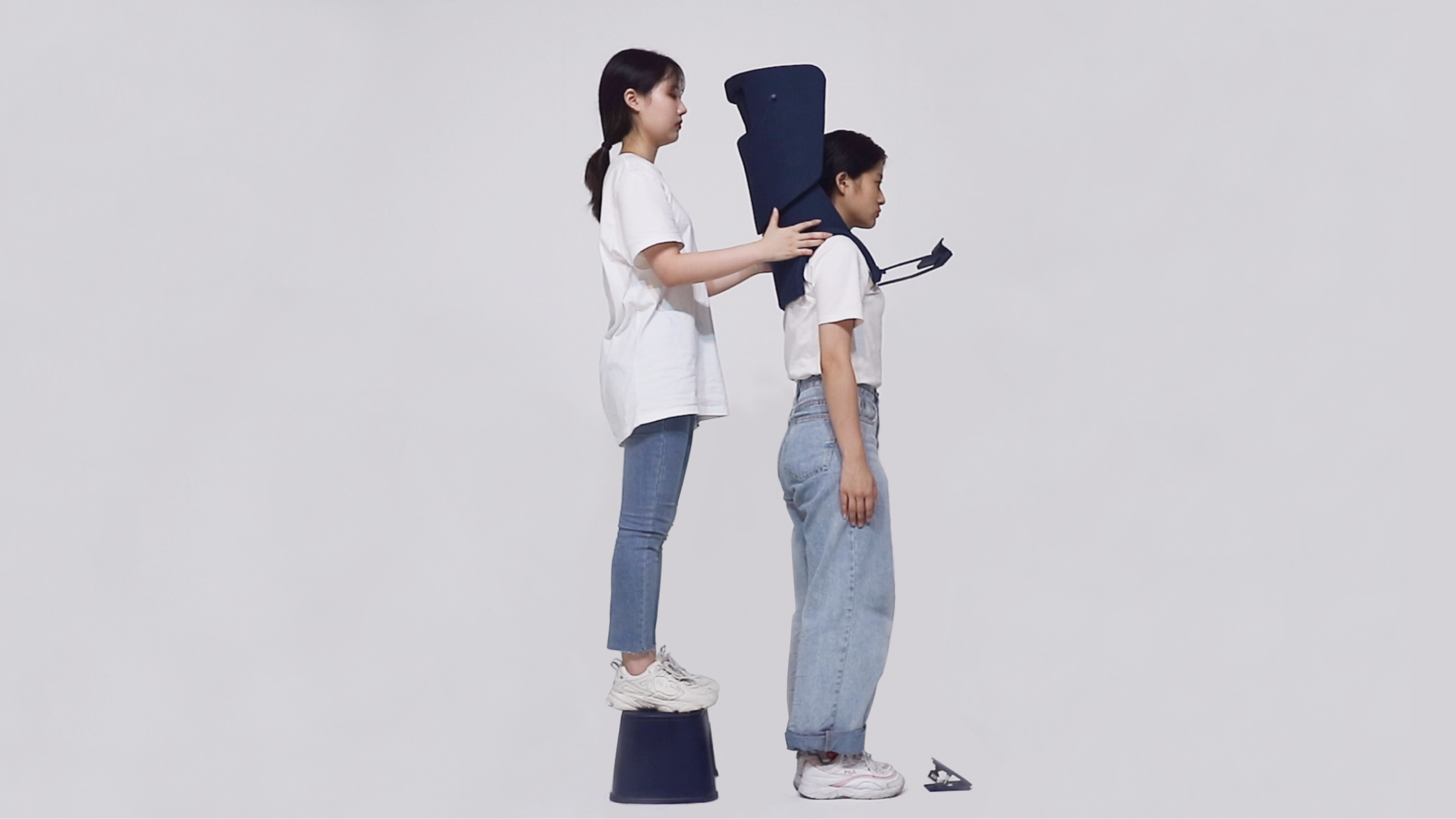
Step 1 Thanks to dad’s sacrifice, the child can see the sun

Input - Dad presses the pedal. (= standing on tiptoe)
Output - The window goes down, and child can see the sun module.



Step 2 As child prays, the sun rises

Input - Child sees the sun module and prays.
Output - The sun rises.

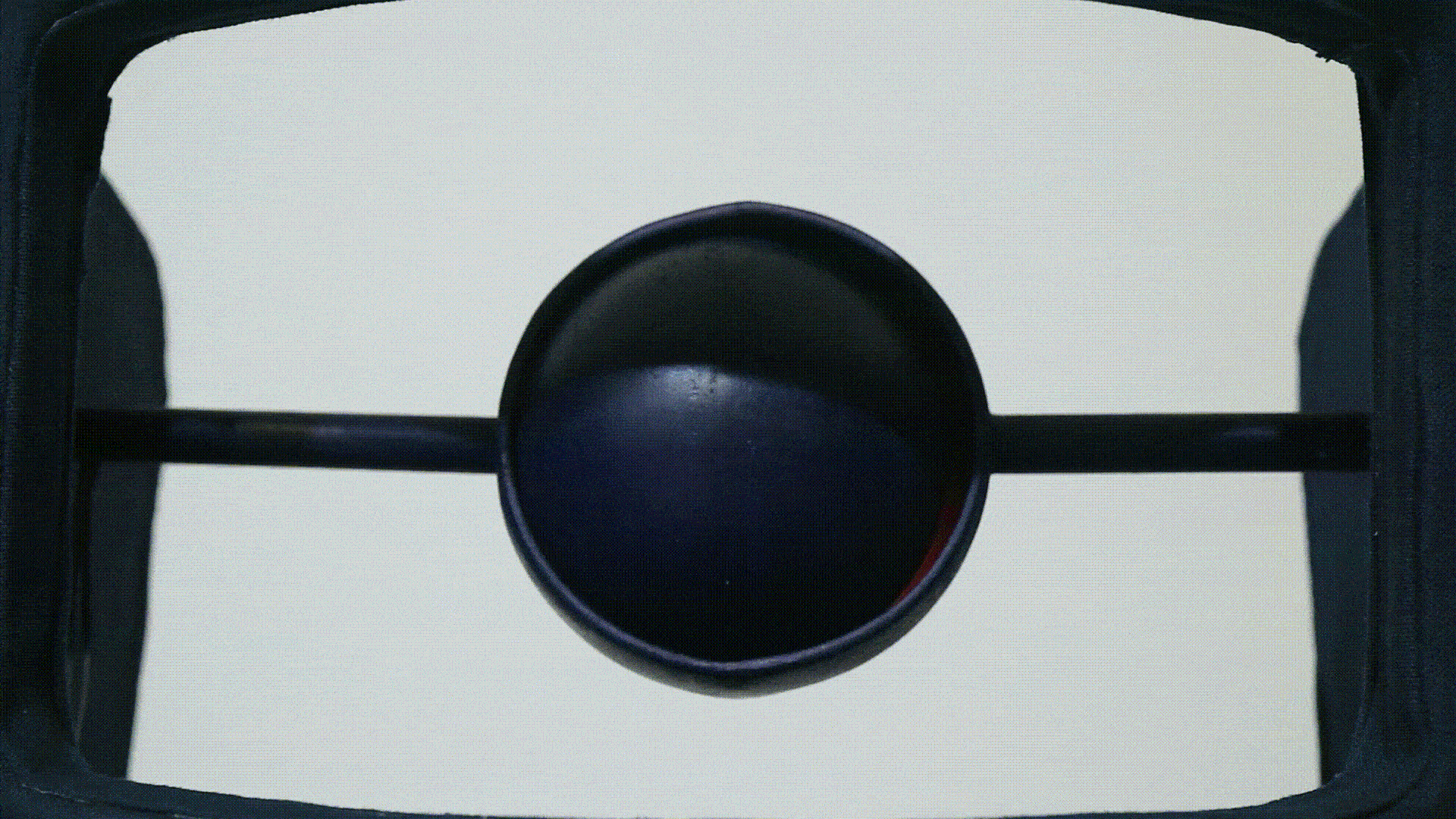
Step 3 Both pray and share the moment of sunrise

Input - Dad notices the sun is rising, and starts to pray.
Output - The video of shining sunlight starts to play on the phone screen.


PROCESS
Mechanism
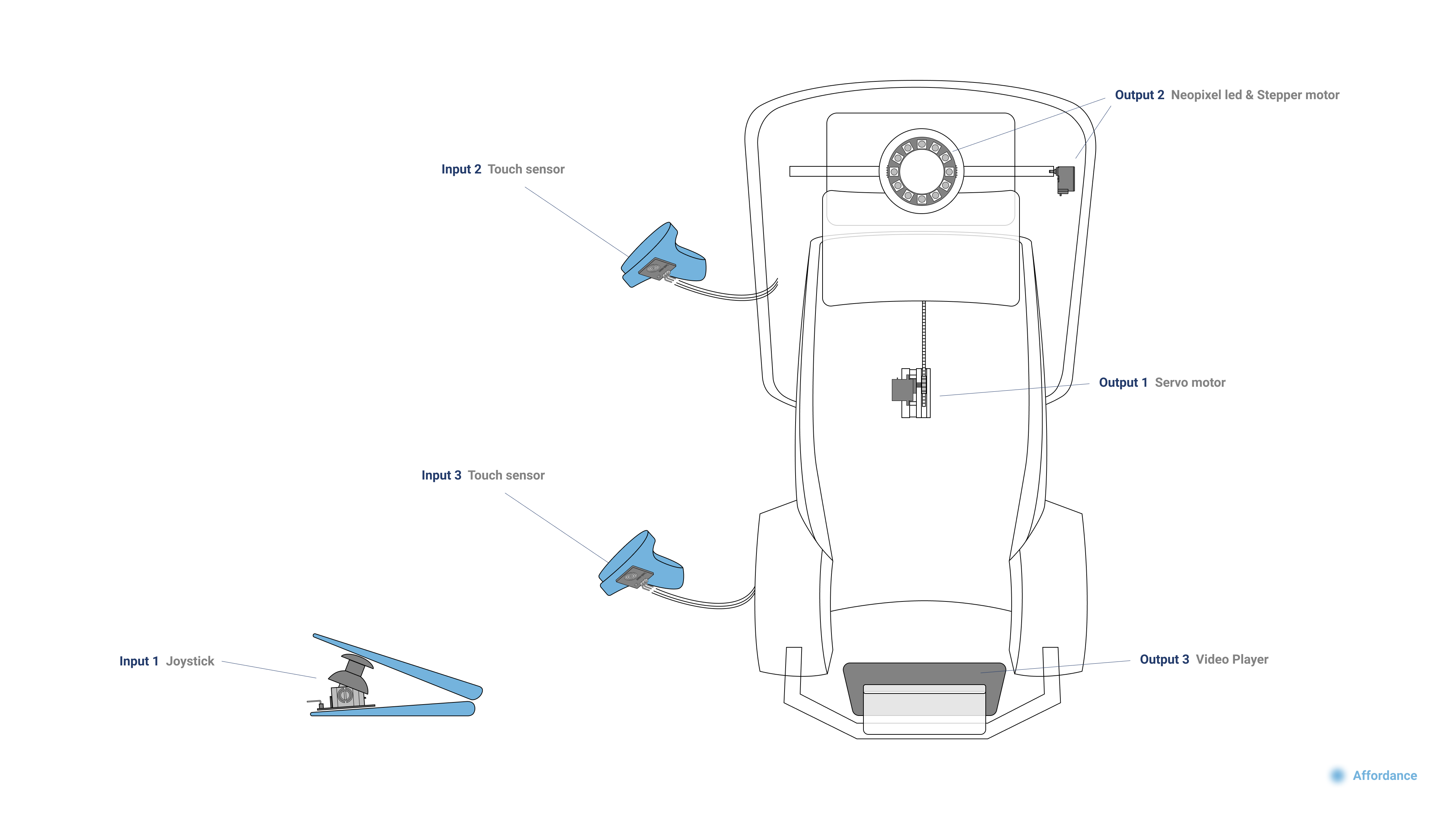
Arduino study
- Sun module
(Touch sensor + Stepper motor )
To implement motion of sunrise when praying, touch sensor and servo motor were initially used. However, as we conducted the experiment, we found that a slower motor would be appropriate to make it feel like an actual sunrise, then decided to use a stepper motor.

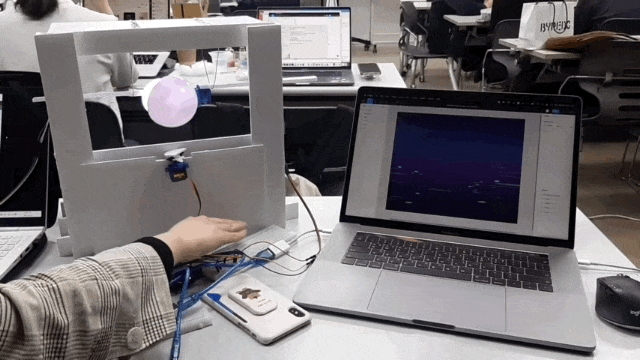
- Sunrise video screen
(Touch sensor + Video play linked to Arduino Leonardo)
In order to make the sunrise video on the smartphone screen turn on when praying, the motion was first produced with Figma illustration. It worked well when using the photoresistor as an input, but when using the touch sensor, it was impossible to control the transparency of the illustration only with 0 and 1 recognition, so we had to find another way.
Eventually, we found a way to control the keyboard to play the video using Arduino Leonardo, and made a new sunrise video with c4d.
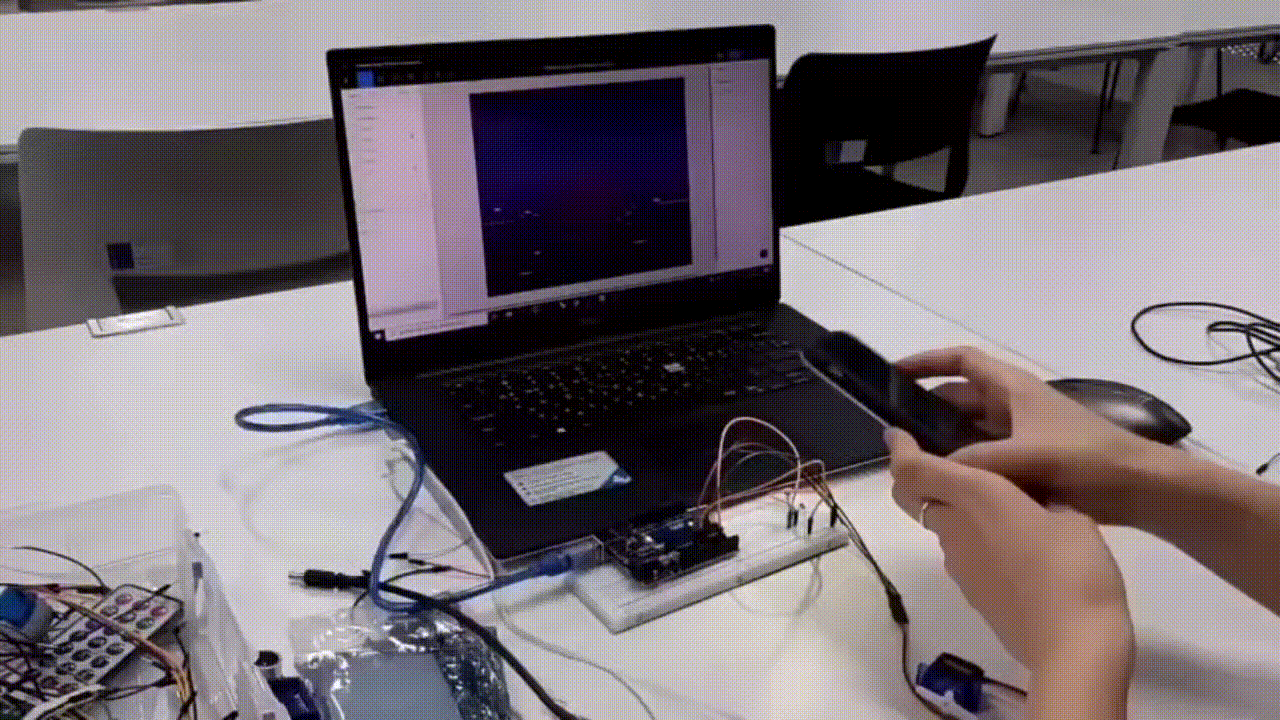


- Window
(Joystick + Continuous rotation servo motor)
To implement a motion in which the window goes down when the pedal is pressed, we initially used a regular servo motor to make the window fall down. Then, in order to make the window free to move up and down, we attatched a 3d printed device to the body part which enables linear motion along the rail. The angle of rotation of servo motor was so small that it was difficult for the window to come down completely. So we used continuous rotation servo motor that rotates 360 degrees.



Form study
- Initial works
(Material: Foamboard)
We designed a way to wear the product over the shoulders using a foamboard.
It helped set the approximate size and height of the product and the location of the window.
- Intermediate works
(Material: Plaster bandages)
To make it more natural to wear on the body, plaster bandages melted in water were attached directly to the body to cast the shoulders and back. It helped to create an ergonomic form of wearable device.




3d printing & Post processing
(Materials: pla, eva, felt)
- 3d printing: Sun module / Wearable body part
The results of the previous mock-up process were simplified and organized through 3d modeling. We refined the body shape through modeling and produced the entire frame and sun module with 3d printing. To reduce the weight of the main body, the parts were divided and perforated, and assembled after printing.





Assembly
After assembling the 3D printed piece, we finished with Eva material on the outside and soft felt on the inside. Finally, we covered the surface with navy blue fabric.



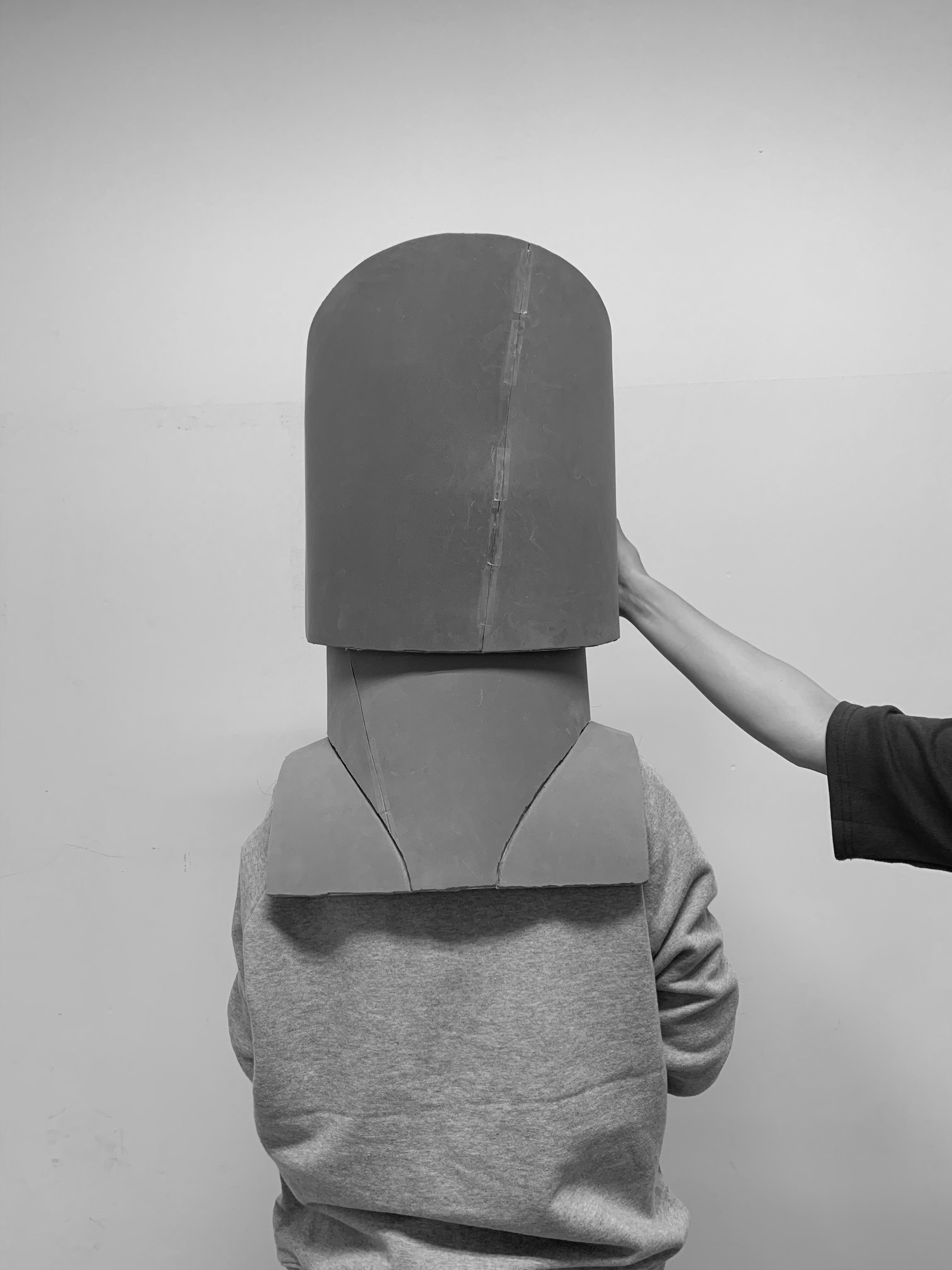
Team members
Jihyun Lim jncello00@gmail.com
Daeun Ku daeun6325@gmail.com
Eunbin Kim qls1928qls@gmail.com